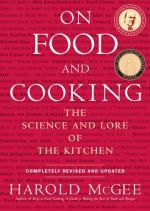|
This section contains 353 words (approx. 1 page at 400 words per page) |

|
Seeds Summary and Analysis
The author defines seeds in this chapter as structures by which plants create a new generation. They contain embryonic plant material together with food supplies for the new plant and an outer insulating layer. These seeds fall into three categories, those of grains and cereals, which are of plants in the grass family, legumes, from the bean family and nuts, from several different families. Seeds have high levels of energy and protein and B vitamins. A lack of these vitamins in history led to diseases such as beriberi and pellagra. Seeds also contain antioxidants such as vitamin E and tocotrienols, soluble fiber (which slows digestion, moderates blood insulin, reduces cholesterol and benefits intestinal bacteria required for the health of intestinal cells), insoluble fiber (which speeds the passage of food through the body), and phenolic compounds, many of which reduce cancer risks...
(read more from the Seeds Summary)
|
This section contains 353 words (approx. 1 page at 400 words per page) |

|




